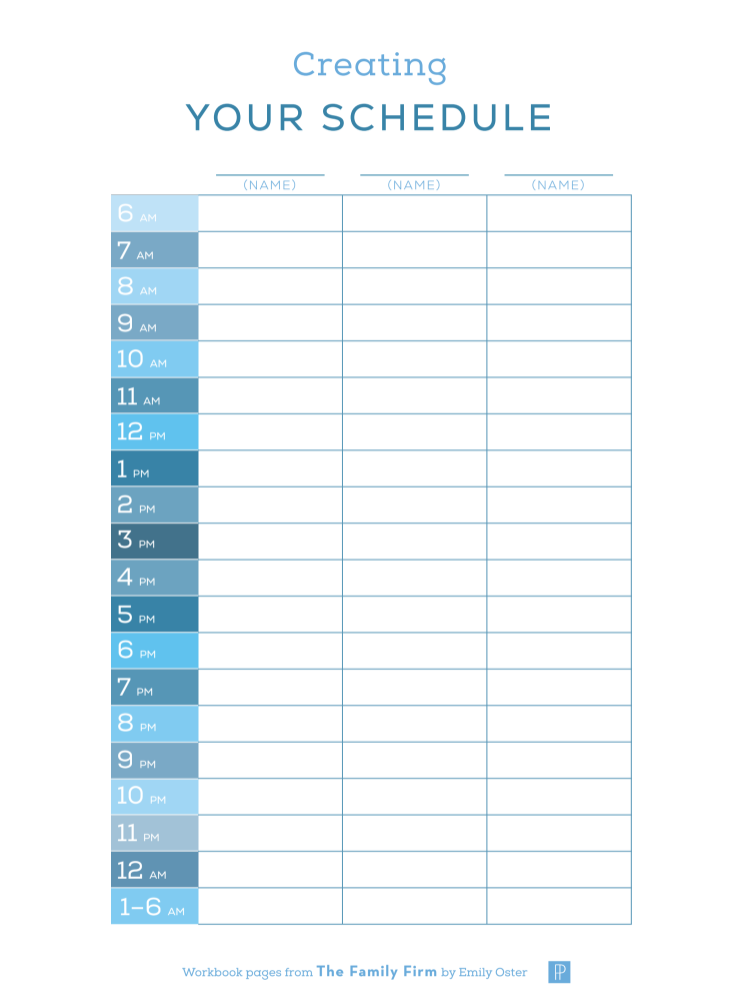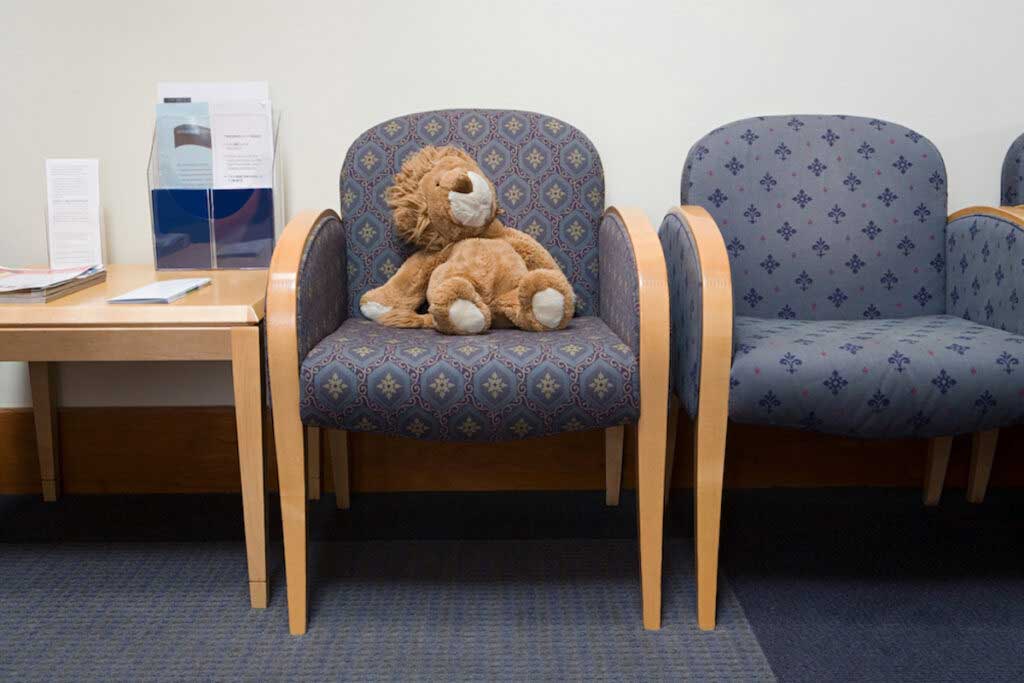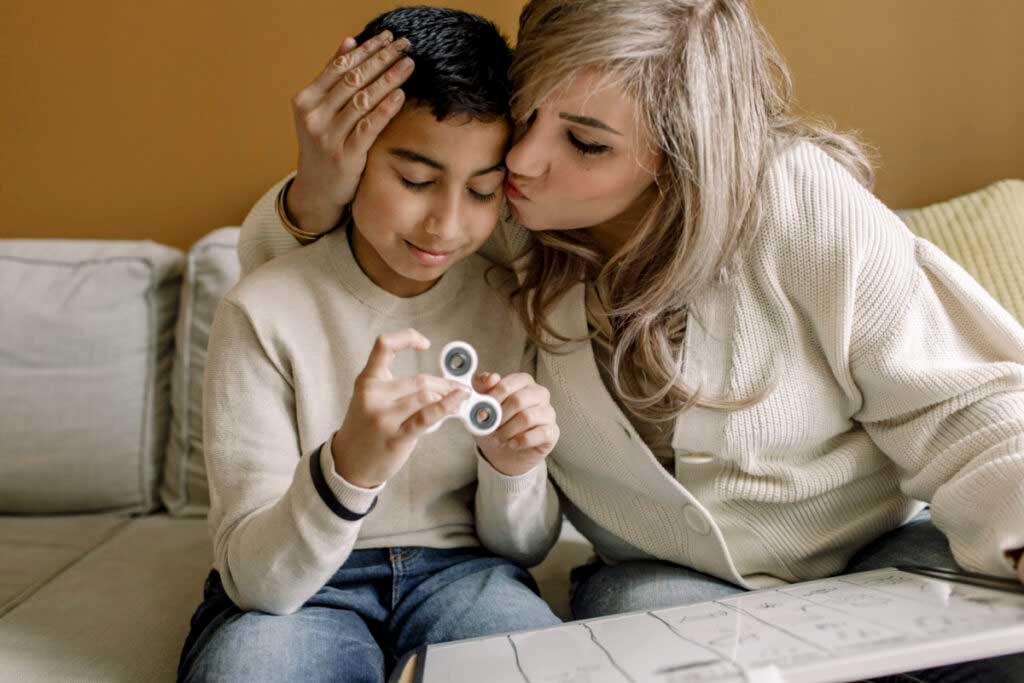The Family Firm was released three weeks ago. I’m blown away and so grateful for all your support. It was on the New York Times best-seller list, which is a dream. But more importantly, I’ve gotten so much lovely feedback from you all about how you might use the tools. (And, by the way, if you want to be able to use those tools more flexibly, you can download the workbook pages from the book here!)
I’ve gotten the chance to do interviews, to talk with people about the “Four Fs” approach to big decisions, and about the data around sleep, screens, food, and the rest. In what feels like a very lucky moment, also, my friend Kelly Fradin organized several in-person events. And I got to talk to actual readers, to hear what was on their mind.
Reflecting on these conversations later, one comment really stuck with me: “This book is a little daunting. It seems like a lot of work.”
In this comment, I heard almost a hint of betrayal. Readers got to know me as the lady who said it was totally cool to eat sushi and have coffee. I was here to help you relax. Now I’m back, and I want you to do workbooks.
In a sense, it’s true. This shift reflects what I see as a shift in the job of parenting. The logistics of our lives get more complicated, and they interact more. Our decisions become linked. The choice of whether to do an evening extracurricular activity and the choice to have dinner are really one decision, not two. This change means, whether we recognize it or not, that our jobs take on more of a management challenge. The approach in the book argues for recognizing this, and tackling it with tools that are designed for this type of problem.
However — and this is what I want to talk about today — the end result of this approach does not necessarily mean fitting more into each day. This is not a book about how to use spreadsheets to make your kids play more soccer. In fact, I think it’s the opposite. It’s about using intentionality to do what you want. Which, often, may mean doing less.
Here’s an excerpt from the start of the book:
Imagine you have two kids. Simon is 9 (third grade); Ellie is 6 (first grade). They go to public school a couple of miles away. Morning bus pickup is at 7:30; school ends at 2:45. Let’s imagine your household has two parents – mom and dad – with the acknowledgement that your adult configuration may well look different.
Here’s one way your day might go. Kids wake up at 6:30, get themselves dressed and come down to breakfast. Family eats a quick breakfast together, and then the kids are hustled out of the house to the bus stop (check: do they have their lunch cards?). Mom and Dad clean up, head off to work. At 3:15 the bus home drops the kids off, to be met by the babysitter and taken home. Two days a week your son goes to soccer after school and another parent drops him back home at 5:30. Parents arrive home around 5:45, say goodbye to the babysitter, dinner is on the table at 6:30 (okay, it’s not a gourmet meal, but everyone likes pasta again, right? RIGHT?). Dinner, bath, some homework for the older kid and both kids are in bed by 8:30.
Or here’s another way. Kids wake up at 6:30, get dressed and eat breakfast. Mom is out the door shortly after they get up, Dad is in charge. Kids are off to the bus, Dad returns to his home office. At 3:15 the bus drops the kids off, met by Dad. One day a week he shuttles both kids to music lessons; two days a week the older child has soccer and the younger has gymnastics at the same time (soccer drop off, drive to gymnastics, wait, drive back, soccer pickup). Most days they are home by 6:30. Kids eat something while doing their homework or watching some TV. Mom returns around 7. Kids are in bed by 8:30 most nights, and Mom and Dad eat a late dinner together.
Or, here’s a third. Kids get themselves up at 7:10 and grab a granola bar on the way out the door to the bus. Dad is already out the door to work by 6; Mom is at home, organizing the chaos. Mom does school pickup at 2:30 and they’re off to a neighboring suburb. Both kids do their homework in Starbucks with a snack, and then head to the ice rink. Figure skating is 5 to 8 most nights. Mom picks up some dinner for the kids around the corner or, if the day was calm enough, she brings sandwiches. Meanwhile, Dad arrives at the rink around 7 to take over and get some time with the kids. Everyone is home by 9 and (on a good day) in bed by 10.
As I say in the book, there is nothing wrong with any of these options! But if you thought your life would look like the first setup, if that was what you wanted, then you might be upset to find yourself in the third case. Or vice versa. The argument in the book is that there is value in thinking about which of these options you want to find yourself in, and then evaluating what choices you can make to get there.
In our case, for example, we put a lot of value on being able to do outdoor excursions as a family on Sundays. Which means, most of the time, we schedule nothing on Sundays. This was true even pre-pandemic. This gives us flexibility.
But without being intentional about it, it wouldn’t happen. There would be birthday parties and playdates and so on. It’s easy to say yes to those things without thinking much about it. If we did that, though, we’d be less happy. So we say no. We do less.
I want to be clear. This choice isn’t about thinking that it’s in some way optimizing our kids. I’m not relying on data that says that making your kid hike until they tell you their feet are bloody stumps is good for them. We do this because it makes us happy.It is how we want our life to look, bloody stump feet and all.
Of course, there are choices we make about the schedule that do reflect our perception of what the kids need. The most notable is prioritizing bedtime, because I believe that the data shows sleep is really important for kids. This prioritization also drives other choices, since if you want someone to be home and in bed by 7:30, it puts limits on the afternoon and evening. But the fact is that many of our choices about our schedule simply reflect our preferences, along with our constraints (e.g. that we both work full-time).
The natural follow-on question is: How would I know if I wanted to do less? More generally, how do I know which of those three options I want to find myself in? One answer is just reflection. But I tend toward the practical, and that is why, in the end, I go in for the workbook pages.
In particular, check out this schedule page of the workbook

Find yourself 20 minutes and fill this out with, basically, what you would like your schedule to look like; maybe one for a weekday and one for a weekend. (If you want an example and you have The Family Firm, a completed schedule is on page 46.)
Be both optimistic and realistic. If you work full-time and that’s not changeable, put it in first. If the kids go to school, put that in too. But do not feel constrained to put in everything you currently do. Just because you do an activity now doesn’t mean you need to do it forever. That’s kind of the point.
This is a starting place for a discussion that likely needs to involve all the parents (if there is more than one) and maybe the kids too. Yes, it is work. But whether you recognize it or not, it’s work you’re already doing in some way. The difference is that we often do not construct our schedule intentionally, deliberately. And that’s where we get into problems, when we do too much or too little or not what we want.
These are problems only a good workbook can solve.

















